
The Thanjavur fort or the Vijayanagar fort, as it is commonly known, was constructed by the Nayak Dynasty. It was Later expanded and renovated by the Maratha rulers during the early 1550 AD. It is home to the Sangeetha Mahal, the Thanjavur Palace, Saraswathi Mahal Library along with an art gallery and Sivagangai Park.
The Thanjavur Veena is the first musical instrument in the country to be awarded the Geographical Indication (GI) tag. It is unique because it is made from a particular strain of matured jackfruit tree found only in that area. It has just one single piece of wood, from head to resonator; contrary to the other conventional veenas made with three different pieces of the head, resonator and neck. This famous Thanjavur Veena was designed by RaghunathNayak.
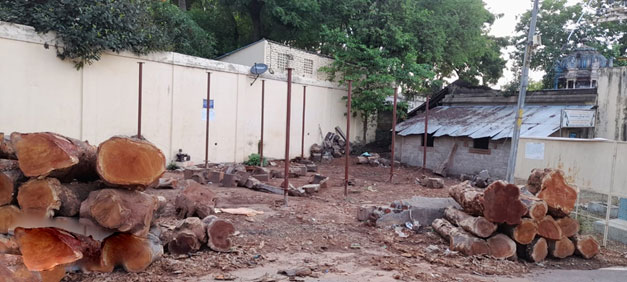

The Schwartz church takes pride of being one of the oldest churches of south India. It was constructed in 1779 by the Danish missionary, Christian Friedrich Schwartz. Fr. Schwartz had been the tutor and mentor of the then Maratha King Serfoji II. On the King’s request, there is a sculpture made of white marble sculpted by the renowned sculptor John Flaxman of London placed in this church. The sculpture depicts King Serofji standing besides the missionary Schwartz who is in his death bed.
The moat surrounding Thanjavur city was developed during the period of the Cholas and Pandiyas. The moat runs for a total length of about 4.3 Km and has an average width of 20m to 80m. The depth of the moat varies from 4m to 6m. Water flows into it from the Grand Anaicut Canal.
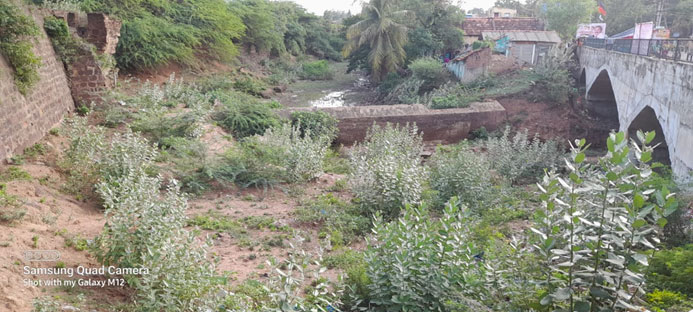
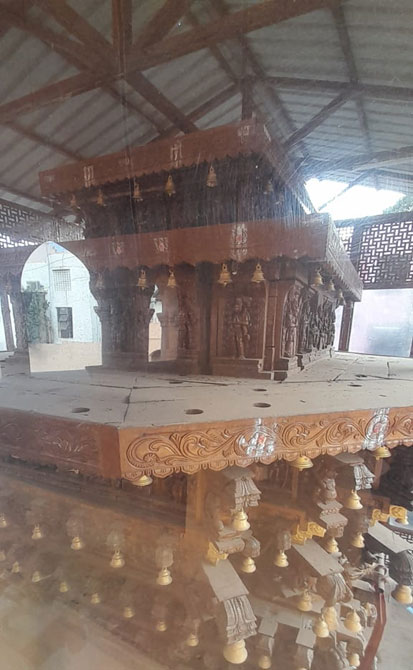
The Temple car boarding place is called ‘Thermutti’. Every temple used to have one such point to lodge the temple car. It is used as a starting point of temple car procession during festivals and ceremonial times. It acts as a decorative stage. Brick and lime mortar are used for their construction.
Thanjavur Quartet were four brothers, Chinnayya, Ponnayya, Sivanandam and Vadivelu, who lived during the early 19th century and contributed to the development of Bharatanatyam and Carnatic music. The four brothers were formally trained in Carnatic music from the renowned MuthusamiDikshitar of the Musical Trinity for seven years and formally codified Bharatanatyam into a structured performance.
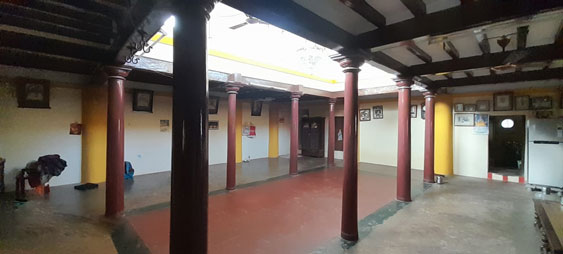

Vital Mandir is a traditional 8 Kattu residence building belongs to a Maratta Brahmin Family constructed during 19th Century. Shri. S. Viswanatha Rao (1862 -1948) was the Chief Advisor to the Royal Family. His grandson 85 years old Mr. V. Sivaji Rao who is living in this house worked as the personal assistant to the first Prime Minister of India Shri. Jawarhalal Nehru and now heads the Maharastra Sabha.
It is a Shiva Temple with 3 tired rajagopuram facing the Eastern Direction. The main deity is Konganeswarar & Goddess is Gnanambigai. The Idol of kongana Siddhar along with saptha Rishis are found in the inner Prakara. It was assumed as the only Chola Temple inside the Fortification.

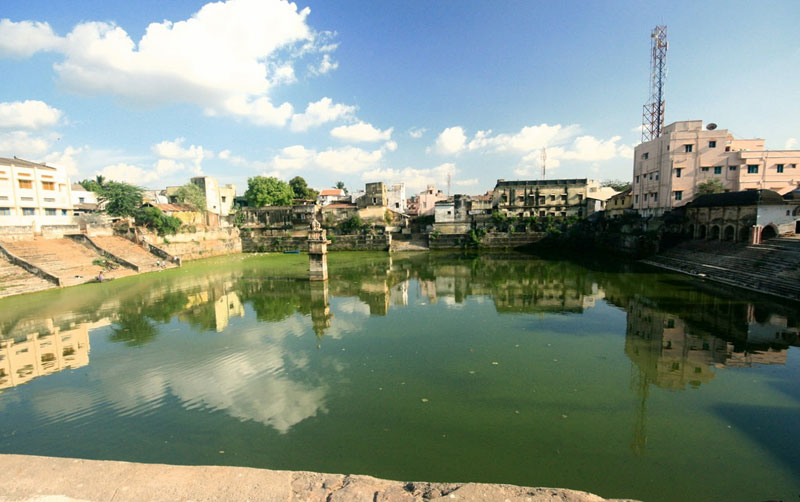
Jalasutra System was introduced during Nayaks period in order for distribution of Water inside the Fortification through Tanks & Wells. This Tank is situated in the West Main Street. The Water was brought to this Tank from Sivaganga Tank in the Small Fort where Water is collected from the Sevappan Naickan Lake
Kalyanasundaram Higher Secondary School is one of the oldest schools in Thanjavur district. It was established in 1891. It is named in honour of Shri.K.Kalyanasundaramiyer who donated land for building this school in 1891.
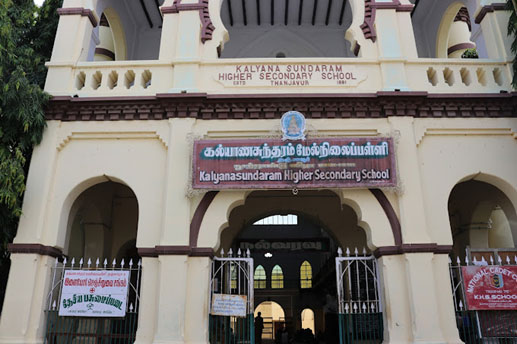
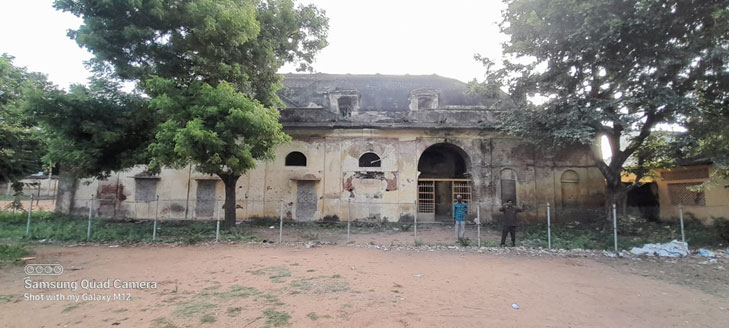
The rice granary found near Papanasam, at ThirupalathuraiPaalaivananaathar temple is considered to be one of the biggest granaries in Asia. It is 36 feet high and has a width of 84 feet. It hasa circular base and a conical top, which hasdoors. We can store 90,000kgs of grain in them. Even today this rice granary stands as evidence to the food grain storing capabilities of the ancient Tamils.
Nanayakara Street / Kasukadai Street was earlier known as Mint Street where Coins are Casted. Nowadays Porkollars / Goldsmith lives in large number in this Area and make Temple & Ornamental Jewelleries


Turret is a small tower that projects vertically from the Fort wall used to provide a projecting defensive position for the Soldiers. There are 8 Turrets in the Palace Fort Wall on South, West & North directions covering 40 Acres of the Palace Area.
Sangeetha Mahal is noted for its architectural and acoustic properties. It is a rectangular shaped hall with exotic chandeliers, exclusively erected for staging dance and music. It can accommodate 1000 audience. This hall was built by Sevappa Nayak, the Nayak King in the 1600s and was called ’NavarathnaMainaNaadagaSaalai’ . During the reign of the Marathas, it was called ‘Sangeetha Mahal’.
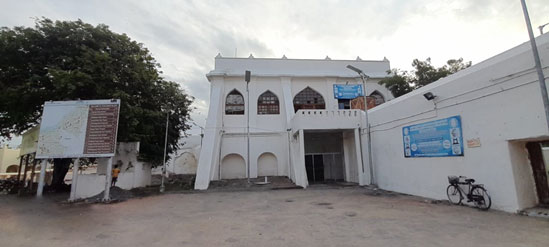

The Saraswathi Mahal Library is one of the oldest and historical libraries in Asia. It was established during the 16th century by the Nayakar Kings of Thanjavur. It is one of the very few medieval manuscript libraries in the world. It was formerly called, ‘Vijaya Vilasam’. In a survey conducted by Encyclopedia Britannica, the Saraswathi Mahal Library has been voted as “the most remarkable library of India”. King Serfoji II, the Maratha ruler and eminent scholar in many branches of learning and the arts, played a pivotal role in the development of the library. The library showcases much of his collections.
Tanjore painting is a traditional art form originating in the region of Tanjore. This art form dates back to the 17th Century during the rule of the Nayaks. Tanjore paintings are known for their surface richness, vivid colors, compact composition and especially the glittering gold foils used to give the paintings their rich look. “Tanjore paintings are mainly panel paintings done on solid wood planks, and hence referred to as palagai padam in local parlance.


The cannon is said to be one of the largest in the world. It is of amazing size and speaks volumes of the metallurgical skill of the people in 17th century. The cannon have been made using Danish technical skills. The 26-foot-long cannon weigh 22 tonnes. It is forge-welded and has not been made by casting. The nearly 400-year-old cannon, though exposed to sun and rain, have not rusted. The outer circle is 300 mm in diameter, while the inner circle is 150 mm in diameter. Inside, it is made using 43 long iron plates and the outer of 94 iron rings.
The first Cosmopolitan Club in South India was opened with a Main Hall by a famous Oriental Scholar, Thereupon Dr Burnell in 1875. The first floor hall was named after the Principal of a local College Marsh in 1896. It reflects the mixed Thanjavur style of architecture. The Havelock Library was added to the Club in 1903, even as the game of cards and ping-pong were introduced in the early 1900


Ranee’s tower was erected in the North East Corner of the Govt. Rajah Mirasudar Hospital in the year 1883. Marble plank in commemoration of soldiers from Thanjavur (Tanjore) died in World war 1 was at Ranees Tower (Clock Tower) in Thanjavur.
The foundation stone for the Ophthalmic ward was laid in 1919, in memory of the end of World War-I, ‘Verisellas Peace Treaty’ by Sir. E.H. Wallace, ICS, Judge, Collector of Tanjore. It was declared open by Viscount Goschen of Hawkhurst, Madras Governor, in 1926.


Prince of Wales Medical School (Tanjore Medical School) was founded in the year 1875 to commemorate the visit of the British King Emperor Prince of Wales visit to South India with a funded capital of Rs. 100000/-
Rettai Masdan Mosque is one of the Oldest Mosque of Thanjavur


In the year 1929 the Viceroy of India & British Governor General Lord Irwin visited Thanjavur. The Bridge under construction over GA Canal that time was named after him
GA Canal was opened in the year 1935 in order to increase the Cultivation Area of Thanjavur District. This work was started in the year 1929 and completed in 5 years under the guidance of Cornel Ellies & Sir Clement Mullings for a stretch of 110 KM.
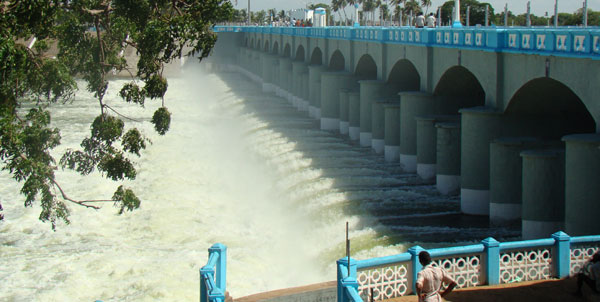

The Indo-Saracenic building was erected in 1896 during the British Rule & was serving as the Collectors Office – headquarters of Thanjavur District Administration.
The Thanjavur Tourism Promotion Council has launched a WhatsApp Channel specifically for Thanjavur Tourism. Kindly invite your friends interested in exploring Tourism & Heritage to join us. Let’s contribute to the promotion of Thanjavur Tourism together!
Copyright © 2023 Thanjavur Tourism Promotion Council. Developed & Hosted by YOGA’S IT Solutions.